Sous Vide cooking it is very scientific and based on thermodynamics, specifically entropy. You vacuum pack the food and put it into a water bath of certain temperature for a period of time and sooner or later all the water and food are at the same temperature and stay that way. The result is perfectly cooked food. Tender meats can be cooked from 1-4 hours with the same result. Tough meats that require the fat to turn to collagen for the silky texture can take days in the Sous Vide but if you are off by an hour or two who cares. Until today I have stayed away from cooking fish in the Sous Vide because of the chaos that I have encountered during my research. With fish the cooking time is down to minutes, and it seems that tuna and salmon are even more particular.
Here is the summary of my research:
Fifty Four Degrees
After 35 minutes, I took it off the brine, I drained and patted it dry and seasoned it with Pepper and a tiny bit of salt – It was already seasoned by the brine – I set the circulator to 50°C for 28 minutes, it’s the time I got from Douglas Baldwin’s “A practical guide to Sous Vide cooking“.
In a previous post he said that 53°C was too high and the fish fell apart.
SousVide Supreme Users Guide
Recommends: 50 minutes at 60°C (this is the safe bet, see below)
A Practical Guide to Sous Vide Cooking
Set the temperature of the water bath to 108°F (42°C) for rare salmon, 122°F (50°C) for medium–rare salmon, or 140°F (60°C) for medium salmon
Beginning Sous Vide
Recommends: 30 minutes at 55.5°C
Modernist Cuisine: The Art and Science of Cooking
Recommends: 46°C for no specified time, but remove when the internal temperature reaches 46°C.
Aside: There also seems to be an issue with fish in the Sous Vide if you are not going to eat it right away. If you want to have cold cooked salmon then you need to take it to a higher temperature of 60°C for a longer period of time. This will pasteurize the salmon, then it needs to be plunged into an ice bath in the vac bag for an hour before refrigeration.
One thing that all of the recipes agree on is that you need to do two things:
1. Skin the fish
I am not sure why you need to skin the fish, but I think it is so you can fry it later and serve on the side. Me, I chuck it in the bin because it disgusts me.
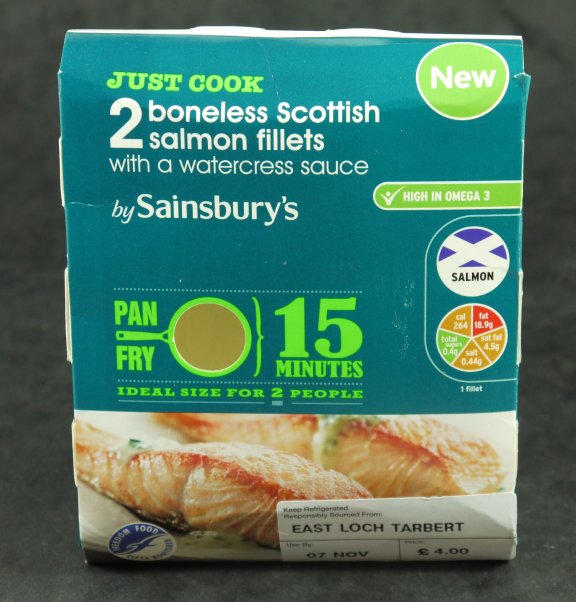
2. Brine the fish
I used a brine of 2% Malden Sea Salt with bottled water for an hour. Brining is used to firm up the fish and also remove serum albumin which is the egg white stuff you see when you cook salmon. It is edible but not very nice.
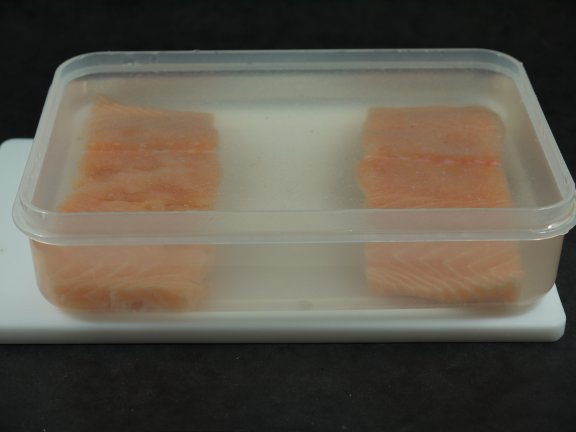
When the brine time was up I washed the fillets off, patted them dry and seasoned with pepper since they already had salt from the brine. Then into the vac-pac for a nice warm bath. I like my salmon done through and flaky but not mushy. I am going to try:
53°C for 30 minutes
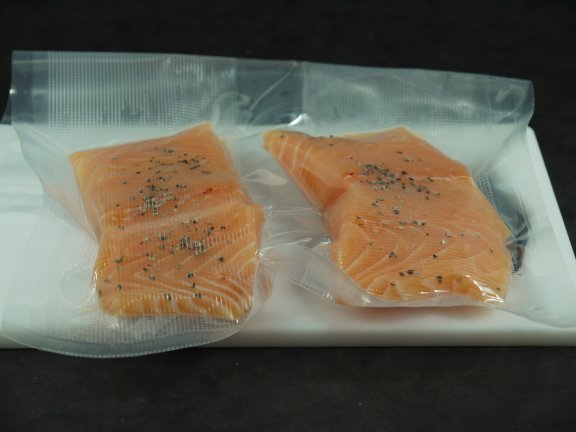
I decided that the salmon would go well with some new potatoes. I like to twist up the new potatoes a bit by cooking them in the Tefal ActiFry.
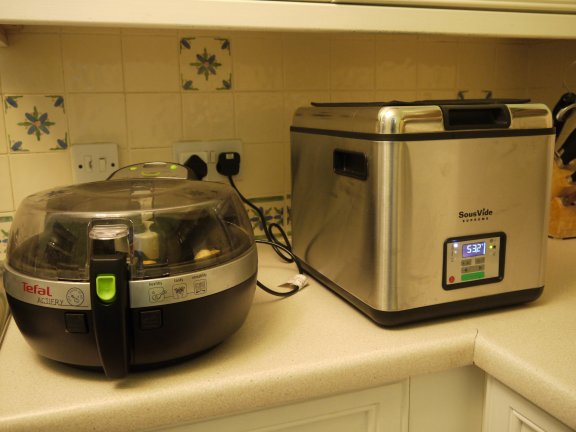
I steamed the broccoli and cauliflower, but made sure that I used bottled water as our water is hard here and it toughens the skin. When the salmon was done, I cut them out of the bag and browned them on each side in a hot pan with some unsalted butter. Here was my dinner platted up.
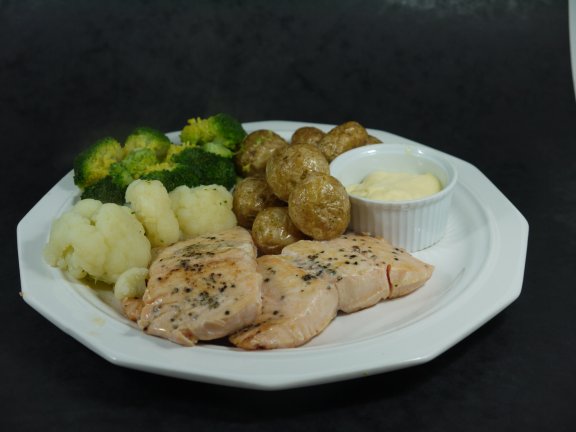
Oh with a side dish of hollandaise sauce of course.
This salmon was beautiful, so moist and flakey.
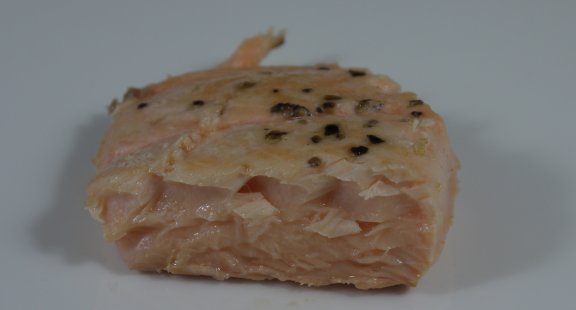
Next time I will crank up the salt to 4% and add 1-2% sugar also for the hour brine. The Sous Vide will be at 51°C for 30 minutes. Hopefully this will be a bit firmer fish and allow me to brown them a little bit longer in the frying pan.
